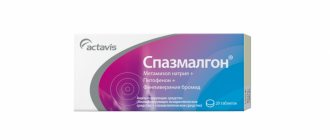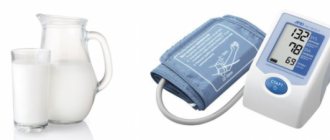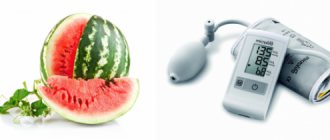Does cocoa increase or decrease blood pressure: an interesting question for people with hypotension and hypertension. The tonic properties of the drink are known. Patients doubt the safety of a regular tasty start to the day.
The Indians drank chocolate with bean puree. This charged the warriors with energy and strengthened their strength. The conquistadors noted that this drink has a bitter taste, but it perfectly restores strength and improves mood. Wounded or sick conquerors recovered faster if they drank it.
The conquistadors brought chocolate to Spain. From there, chocolate (as this drink was called then) came to France. There it was called the “queen’s drink” and was sold in cafes.
It is impossible to imagine a modern man’s menu without this aromatic hot drink. How to have fun without harming your body? Can people with blood pressure disorders drink boiling liquid without restrictions?
Features of the drink
Cocoa has a stimulating effect on the body. A cup of hot drink helps you forget about fatigue. The aromatic liquid lifts your spirits and restores your strength.
The powder contains a small amount of caffeine. In combination with other elements, the drink has a gentle effect on the cardiovascular system. The potassium content strengthens the heart muscle, B vitamins support the functioning of the nervous system. Antioxidants speed up metabolic processes and strengthen the immune system. All this has a positive effect on the patient’s blood pressure.
Dark chocolate
Researchers believe that dark chocolate, which contains 80 to 100% cocoa, prevents and lowers blood pressure levels.
Only chocolate containing 70% cocoa is healthy. It's better to buy 80-90%
A hypertensive crisis that occurs when eating junk food can cause rupture of the vessels that supply blood to the liver.
A few pieces of dark chocolate before eating can help avoid this problem.
Scientists at the University of California have proven that flavonoids contained in dark chocolate support heart function. Helps improve blood circulation and destroy blood clots.
Composition of cocoa
The powder has a multicomponent composition. This includes:
- potassium, phosphorus and their salts;
- chocolate anthocyanins;
- alkaloids (theobromine, caffeine);
- flavonoids;
- purines;
- anandamide;
- dopamine;
- histamine;
- arginine;
- tyramine;
- serotonin;
- phenylethylamyl;
- vitamins (A, E, PP, B);
- calcium, magnesium, sulfur;
- fluorine, iron, zinc, copper;
- manganese, molybdenum, zinc.
To obtain high-quality cocoa powder, a fat content of about 15% is required. This raw material produces a tasty and healthy drink.
Two basic recipes for making tasty and healthy cocoa
Today this drink can be prepared in different ways and sometimes with rather unexpected ingredients. But if you are an avid cocoa lover, then the space for experimentation is endless. Here you will also find two of the most popular recipes that will allow you to enjoy the taste and aroma of the drink.
Classic European cocoa or “hot chocolate”
The good thing about this recipe is that it meets the expectations of all chocolate lovers. The taste is rich and dense, and the thick texture of the drink only emphasizes the depth of sensations. This cocoa will appeal to adults and children.
The only thing worth remembering is that this is a treat that has a high calorie content. This means that with the right diet, it is permissible to treat yourself to one cup a day.
Required
:
- 250 ml milk of any fat content. The higher the percentage of fat, the higher the calorie content of the drink.
- Chopped half a vanilla pod (or 1 teaspoon vanilla extract).
- 40 g grated cocoa (in pieces).
- 1 tbsp. a spoonful of honey or granulated sugar.
So let's get started
:
- If vanilla bean is used, then the grated mass is boiled in milk over low heat for about 10 minutes. If it is an extract, then we skip this step.
- Strain the milk from the vanilla stick and return to the heat. If necessary, heat the milk and add cocoa pieces to it. Stir the mixture until they are completely dissolved.
- Add sugar or honey to the drink, after which you can serve the treat to the table.
If you use lump grated cocoa, the drink will be thick, and its taste will delight you with a dense chocolate taste. It is impossible to achieve such an effect with soluble analogues.
Diet option
If the desire to add cocoa to your diet is great, but it is important to maintain weight, then dietary recipes will help. These may include prunes, beets, bananas and kefir. All these ingredients are designed to enrich the taste of the drink and give it sweetness, since in its original form cocoa is brewed with a minimum of ingredients:
- For 1 serving of the finished drink, you can take water, milk, or mix them in proportions as you wish.
- Bring the liquid to a boil, add cocoa. It can be cocoa powder, but if you wish, you can also treat yourself to a piece of treat.
- Next, stir and brew the drink according to the instructions, if it is a powder. And wait for complete dissolution in the case of lump cocoa.
You can add honey for sweetness, but each additional ingredient only increases the calorie content of the finished cocoa. In order to diversify the flavor palette, you can add spices in the form of cinnamon, chili pepper, etc.
In general, if you give up sugar, even this drink will delight you with its natural sweetness and originality. But if you want to experience the true beauty of cocoa beans, then prepare the drink according to all the rules of the classic recipe.
How to choose good cocoa
A cup of hot drink stimulates the production of the happiness hormone - endorphins. But the drink will only be beneficial if you use high-quality powder. How to choose:
- When purchasing, it is recommended to pay attention to the color of the powder. It should be light brown.
- The raw material should be crushed between your fingers. High-quality powder smears, but does not leave greasy stains.
- This is required to assess the uniformity of the product packaging. The powder should be free-flowing, without lumps. There are no additional inclusions.
- You should pour the raw material into your hand and try to shake it out of your hands. Powder particles should remain on the skin.
- You should be able to smell the freshly opened package. The aroma should be rich, “chocolate”.
- Pay attention to the fat content (inscription on the package). Quality goods more than 15%.
You should not buy instant cocoa. It’s not difficult to prepare, but the drink turns out to be useless: the product has undergone additional processing and is oversaturated with sugar.
When purchasing, pay attention to the manufacturer. Reputable companies purchase raw materials from leading producers who grow cocoa beans using environmental technologies. This cocoa is labeled “eco” and costs much more.
A little history
The first who were able to appreciate the beauty of the drink were the inhabitants of what is now America. They sincerely revered cocoa beans, and one might say, to some extent, deified them. So in Indian mythology you can find the goddess Shkakau, who was the patroness of cocoa beans, and her name literally translates as “cocoa eater.”
However, the modern name "Cocoa" was borrowed from the Aztec language. There, a drink was made from the beans, which was called kakauatl. Translating the term, we get the phrase “bitter water” and it is from this word that the modern name cocoa was born.
It was the Aztecs who gave us the second important word for those with a sweet tooth: “chocolate” chocolatl
. Although initially it was a foamy drink that was prescribed only to men, women and children were forbidden to drink it. It was believed that it was harmful to health.
The European and world community got the opportunity to get acquainted with this strange product only after 1502. At that time, Columbus was making another trip to new lands, in which the sailors noticed strange nuts. And it took more than 300 years for humanity to be able to enjoy the first cocoa drink, exactly as we imagine it. Back then it was a thick, fatty and foamy cocktail, which over time lost its calorie content and became an easily soluble modern delicacy.
The effect of cocoa on blood pressure
Patients often ask about cocoa and blood pressure. Many patients with hypertension are disappointed by the presence of caffeine in the product. They stop drinking their favorite drink, fearing pressure surges. People suffering from hypertension expect a miraculous increase in blood pressure after a cup of morning drink.
The direct effect of cocoa on blood pressure has not been proven.
Simply consuming the product will not cure high blood pressure or make life easier for someone with hypertension. But the rich set of powder elements has a healing effect on the body. Blood pressure is normalized indirectly. The mechanisms for regulating low and high blood pressure are different.
Powder harm
Despite all the benefits, cocoa is harmful to some people. The list of contraindications for using the product is small, but it should be studied by anyone who wants to treat themselves to a delicious chocolate dessert or a cup of aromatic drink.
- Age up to three years. Children can react to cocoa with extreme excitability. Therefore, you should not be surprised that the baby refuses to sleep and is capricious.
- Kidney problems, gout. When consuming cocoa-containing products, purines are produced, which aggravate the condition of patients.
- Diabetes. The disease involves a number of dietary restrictions, the list of which includes cocoa.
- Chronic constipation. A drink made from cocoa powder or chocolate will have an additional fixing effect.
- Allergy. Cocoa is a fairly strong allergen. Moreover, it is not the components of the powder that cause the body’s reaction, but the unsanitary conditions of bean processing, which some manufacturers suffer from.
Relative contraindications include pregnancy. During this period, you should not drink cocoa if you have hypertension, as the risk of allergic reactions increases. However, beans contain folic acid and zinc - substances necessary for the harmonious development of the baby in the womb. Therefore, doctors recommend drinking cocoa and eating chocolate, but only in strictly limited quantities, so that the expectant mother can get a boost of energy, positive emotions and nutrients without harm to her health.
[node:field_similarlink]
Is it possible to drink cocoa with high blood pressure?
Only a high-quality product will benefit the body. It should not contain dyes, emulsifiers, flavors or sugar. The effect of such a drink on the body is obvious. However, daily consumption may lower blood pressure.
In case of primary hypertension, drinking a cup regularly calms the patient and normalizes the functioning of the nervous system. The body is protected from the effects of stress. Result: lower blood pressure.
Sometimes high blood pressure is the result of pathologies of the nervous system, heart, kidneys, liver, endocrine system, or taking medications. In case of secondary hypertension, cocoa does not lower blood pressure.
People with hypertension can consume cocoa in moderation without the risk of increased blood pressure. It will improve your mood, strengthen your immune system, and saturate your body with useful elements. A high-quality drink will improve the performance of hypertensive patients.
conclusions
Despite the fact that cocoa contains a large number of calories, not only children, but also adults love to consume it. The drink contains vitamins that have a positive effect on the entire body as a whole. For hypertensive patients, it will be useful in that it will stabilize blood pressure and improve their general condition.
We should also mention weather-dependent people, for whom cocoa will be a real salvation. The usefulness of the product has been proven by medical research, therefore, by drinking one cup of cocoa a day, you can make your body not only more energetic, but also healthier.
Does cocoa raise blood pressure during hypotension?
People suffering from hypertension unsuccessfully expect normalization of blood pressure as a result of drinking a cup of cocoa daily. But if the pathology arises as a result of a disorder of the autonomic nervous system, it is effective to eat cocoa.
Occasionally, some patients note the positive effect of drinking on normalizing blood pressure. In other cases, hypotensive patients may enjoy the taste of the drink without expecting a miraculous recovery.
If you feel unwell, contact your doctor. He will prescribe appropriate therapy to normalize blood pressure.
For hypertensive patients
Patients suffering from high blood pressure are people at particular risk. Cardiac pathologies are among the top three in mortality in developed countries of Europe and in Russia as well. It is quite understandable that the doctor and hypertensive patients themselves are careful about the foods they eat. Drinks are a separate issue. Everyone knows that coffee can increase blood pressure, but is this statement true regarding cocoa?
Be sure to make cocoa with milk to improve calcium absorption
For hypertension, doctors do not prohibit drinking the drink, but even recommend this delicious delicacy. It's all about the effect of the product on certain centers of the brain that control blood pressure. Thanks to its action at high blood pressure, it stabilizes to normal levels if you drink the drink. It also provokes the release of hormones that stabilize blood pressure. Therefore, you should not worry that consuming the drink will worsen your health.
Of course, cocoa is not a panacea and there is no need to rely on it, especially during a hypertensive crisis. It is much more correct to control hypertension in other ways, carry out prevention and prevent increases in levels. In addition, the immediate effect of drinking a cup does not occur; it must be drunk regularly in the recommended volumes to keep the pressure under control.
Contraindications for taking the product
The powder is not a safe product. People with hypertension and hypotension should use the drink with caution. Contraindications:
- Diabetes;
- rheumatism;
- gout;
- obesity;
- allergy;
- pregnancy (allergic reactions are possible).
It is not recommended to give cocoa to children under 3 years of age.
Cocoa drink is made from sugar, milk and cream. It has too many calories. Patients with limited weight and abnormal blood pressure should exercise caution. It can be reduced by diluting the milk or completely replacing it with water.
In case of lactose intolerance in hypertensive patients with hypotension, animal milk can be replaced with soy milk.
The tonic effect of the drug reduces the time of administration. It is advisable to drink aromatic chocolate in the morning.
Some researchers have noticed the presence of insect chitin powder during unskilled bean harvesting. Causes severe allergic reactions. But agricultural producers say: with modern technologies this is out of the question.
Hypertensive and hypotensive patients should remember: only moderate consumption of high-quality cocoa drink will benefit the body.
Useful and harmful properties
The unique microelements contained in the fruits of the chocolate tree have a beneficial effect on our body, so regular consumption of the drink helps improve overall condition and well-being.
- Reduces the risk of blood clots in the body's circulatory system by improving blood circulation, thinning the blood and improving the condition of the inner surface of blood vessels.
This is interesting! Cocoa has the properties of pharmaceutical drugs - aspirin or cardiomagnyl, due to the combination of certain elements in its composition. So instead of the pharmacy, you can go to the grocery store.
- Increases the elasticity of cardiac muscle fibers, having a beneficial effect on the entire cardiovascular system.
- Compensates for nervous and physical overload, providing a sedative effect.
- Increases the overall tone of the body and nervous system, without creating a stressful state and without increasing blood pressure, like coffee.
- It is a natural antidepressant, but does not cause addiction if consumed frequently (unlike coffee).
But, like any product, cocoa has contraindications and negative consequences for certain health conditions or excessive abuse of the delicious drink. It is not recommended to give it to children under 3 years of age, as well as to those with individual intolerance or allergies.
People with the following diseases should avoid cocoa altogether:
- overweight, obesity types 2-4;
- metabolic disorders;
- gout;
- atherosclerosis;
- gastrointestinal problems, constipation;
- pyelonephritis, chronic kidney disease;
- calcium deficiency.
Medical fact! People with type 2 diabetes can afford no more than 250 ml of cocoa per day without added sugar and milk, consuming it only in the first half of the day.
Cocoa during pregnancy
Pregnant women with high blood pressure and uterine tone, as well as severe toxicosis, should completely stop using the product. It can increase unpleasant symptoms.
If there are no such health problems, then cocoa is even recommended in the first trimester of pregnancy. At this time, the fetus develops its musculoskeletal system, so it needs all the nutrients that are contained in large quantities in chocolate beans.
Attention! The main negative property of cocoa is the leaching of calcium from cells, so if your tests show a deficiency of this microelement, stop drinking the drink until the substance’s normal level is restored.
But still, you shouldn’t worry too much; during pregnancy, increased anxiety is much more dangerous than cocoa. Scientific research confirms that chocolate powder does more good than harm. Therefore, it is better to focus on your well-being and the advice of your doctor.
General effect on the body
Chocolate beans contain various chemicals, micro- and macronutrients that have specific effects on the body.
- Valuable minerals: calcium, sodium, iron, phosphorus, zinc, manganese, potassium, copper, sulfur and others in smaller quantities.
- Vitamins: A, E, F, K, PP, group B (B1, B2, B5, B6, B9).
- Theobromine is a good stimulant and acts like caffeine.
- Caffeine is a well-known alkaloid.
- Polyphenols - improve the functioning of the cardiovascular system, regulate blood pressure.
- Flavonols: epicatechin and catechin are organic antioxidants that promote the formation of new neurons and improve memory, and also act as an anti-allergy remedy.
- Tannins are special compounds of minerals and salts that have bactericidal and astringent properties, fight inflammation and parasites.
- Organic acids: linoleic, palmitic, stearic, oleic.
- Dietary fiber improves the functioning of the gastrointestinal tract.
- Neurotransmitters: endorphins, serotonin.
- The amino acid tryptophan, necessary for the production of neurotransmitters in the brain.
- Melanin - protects the skin from ultraviolet rays.











